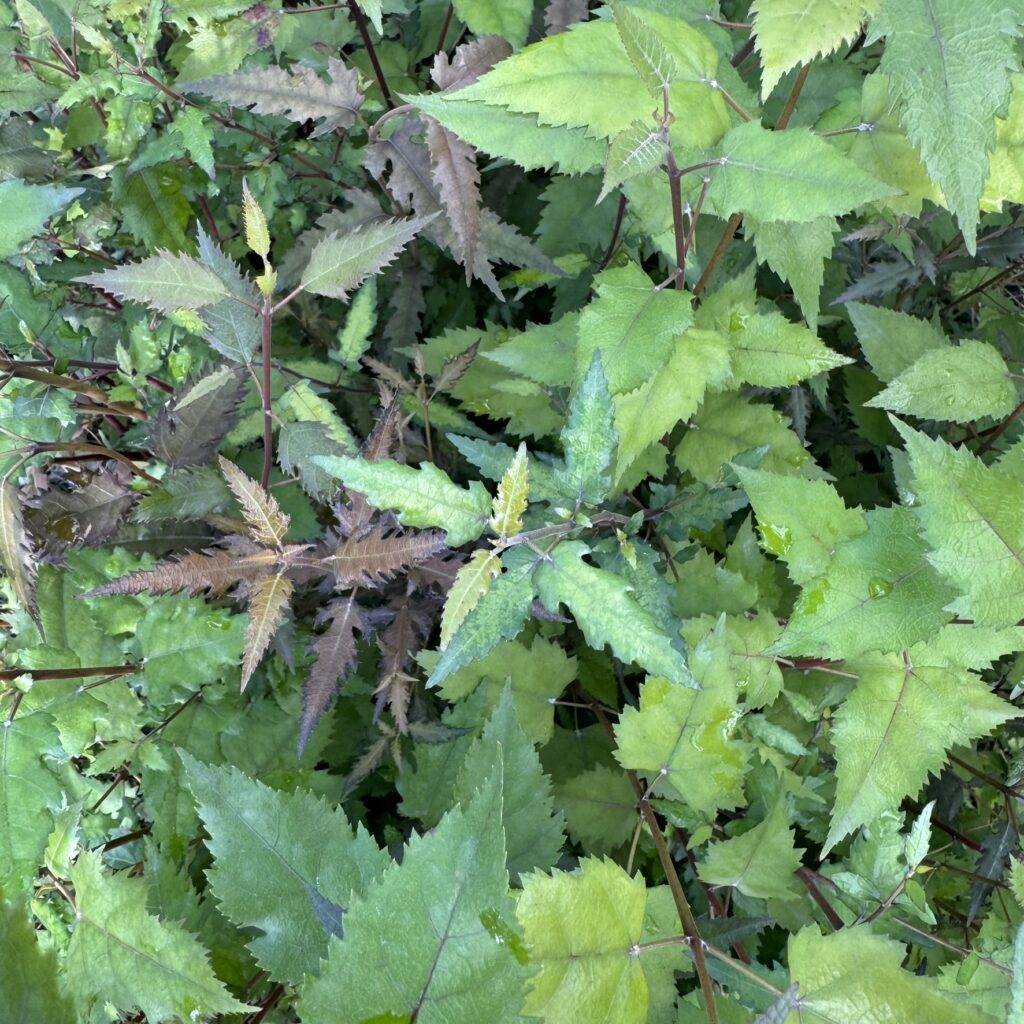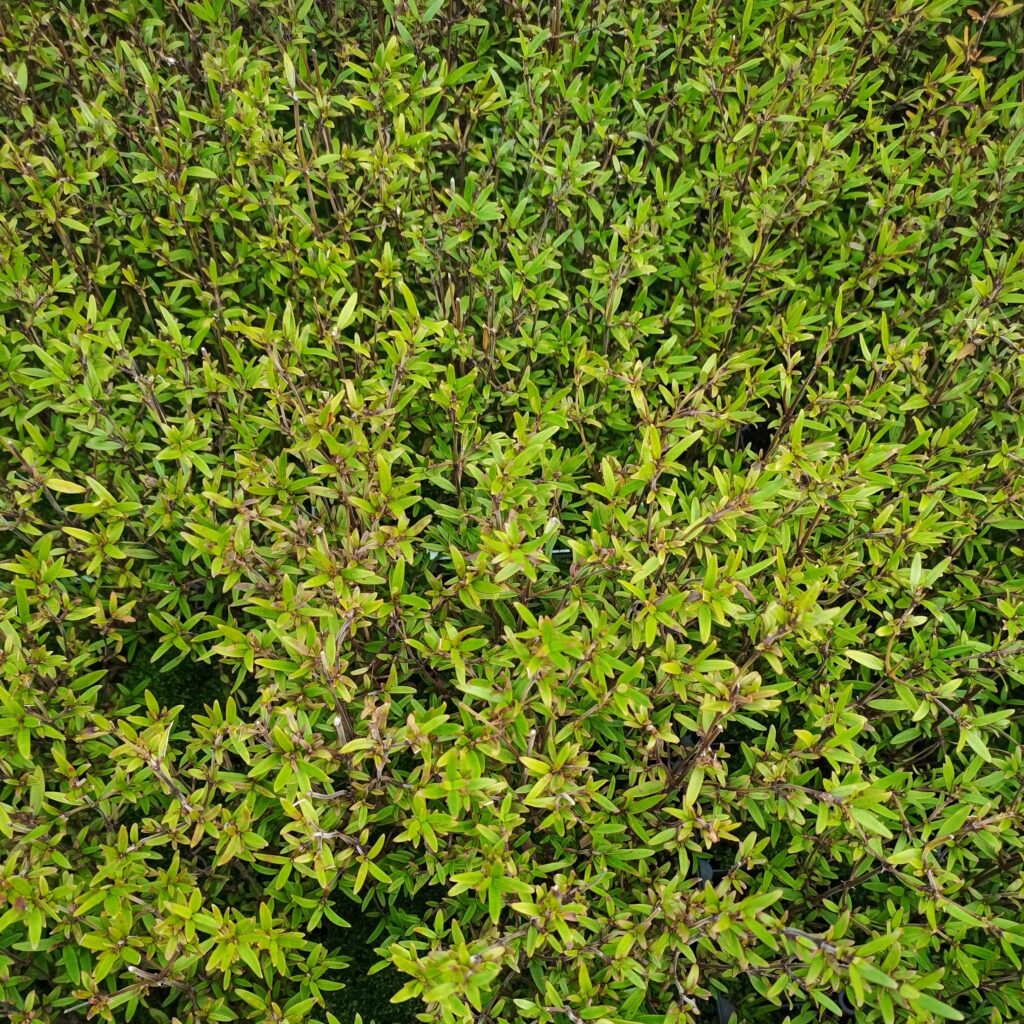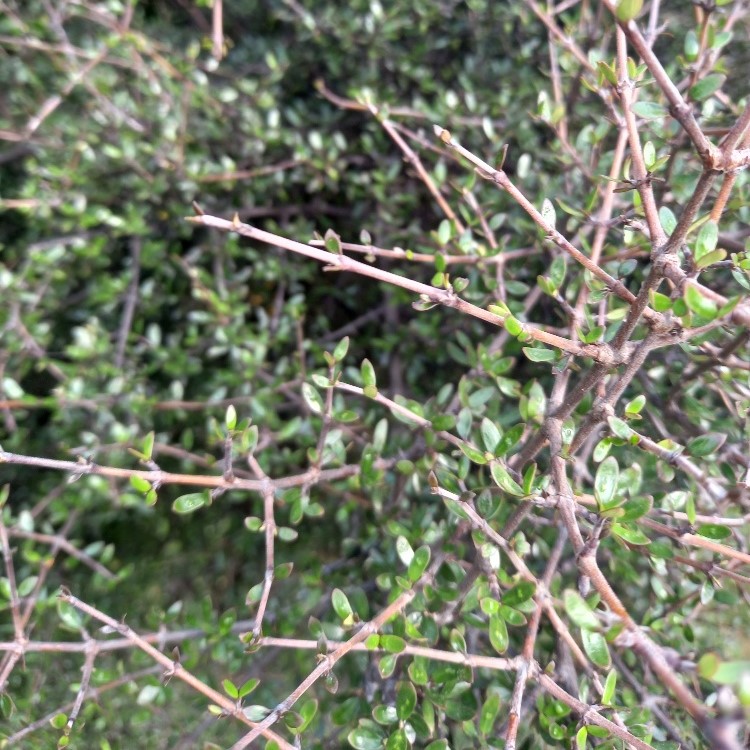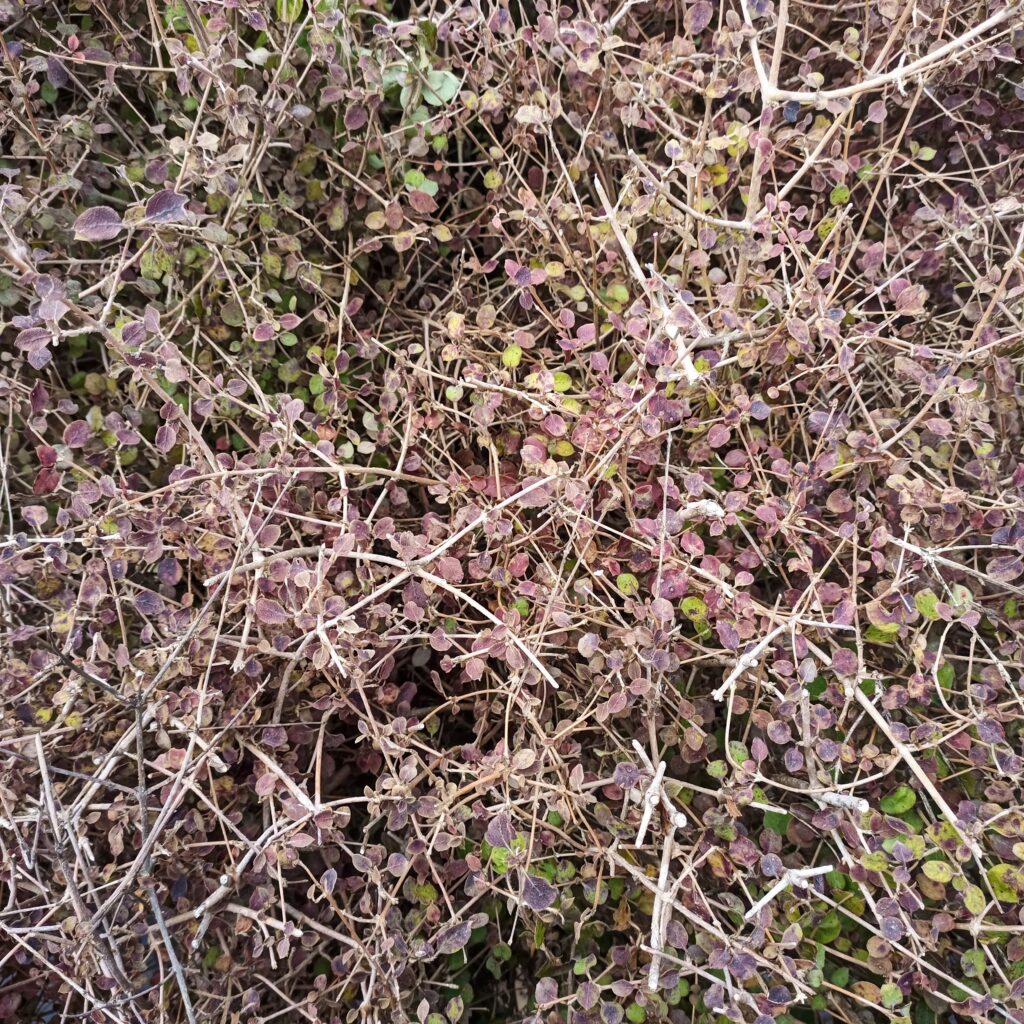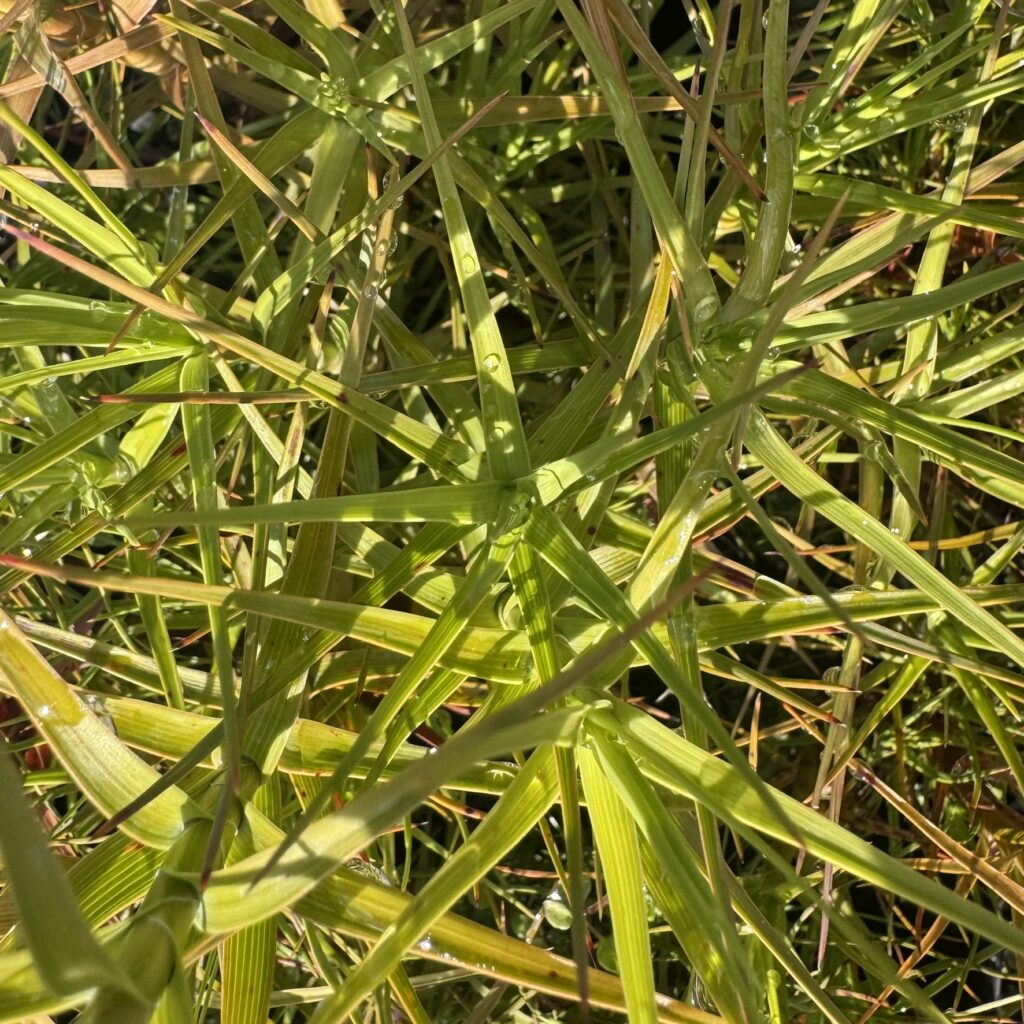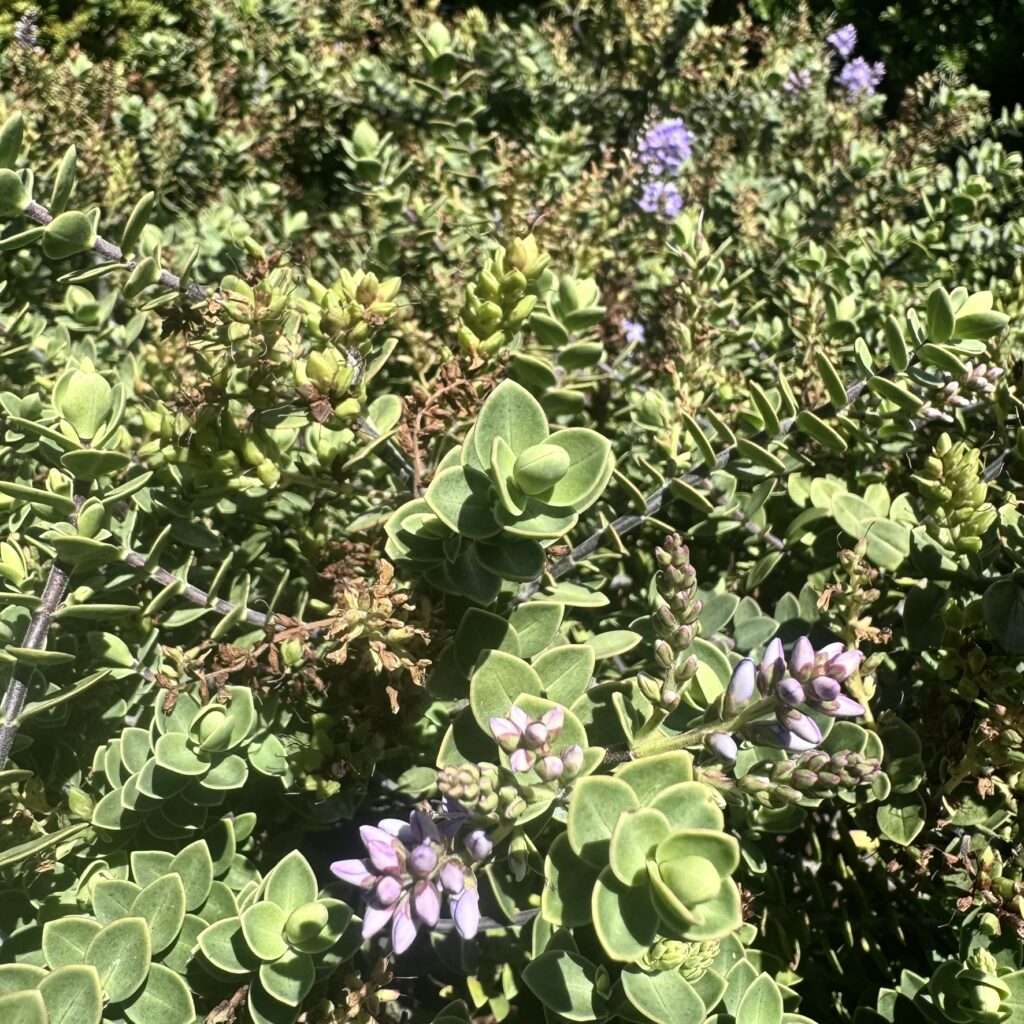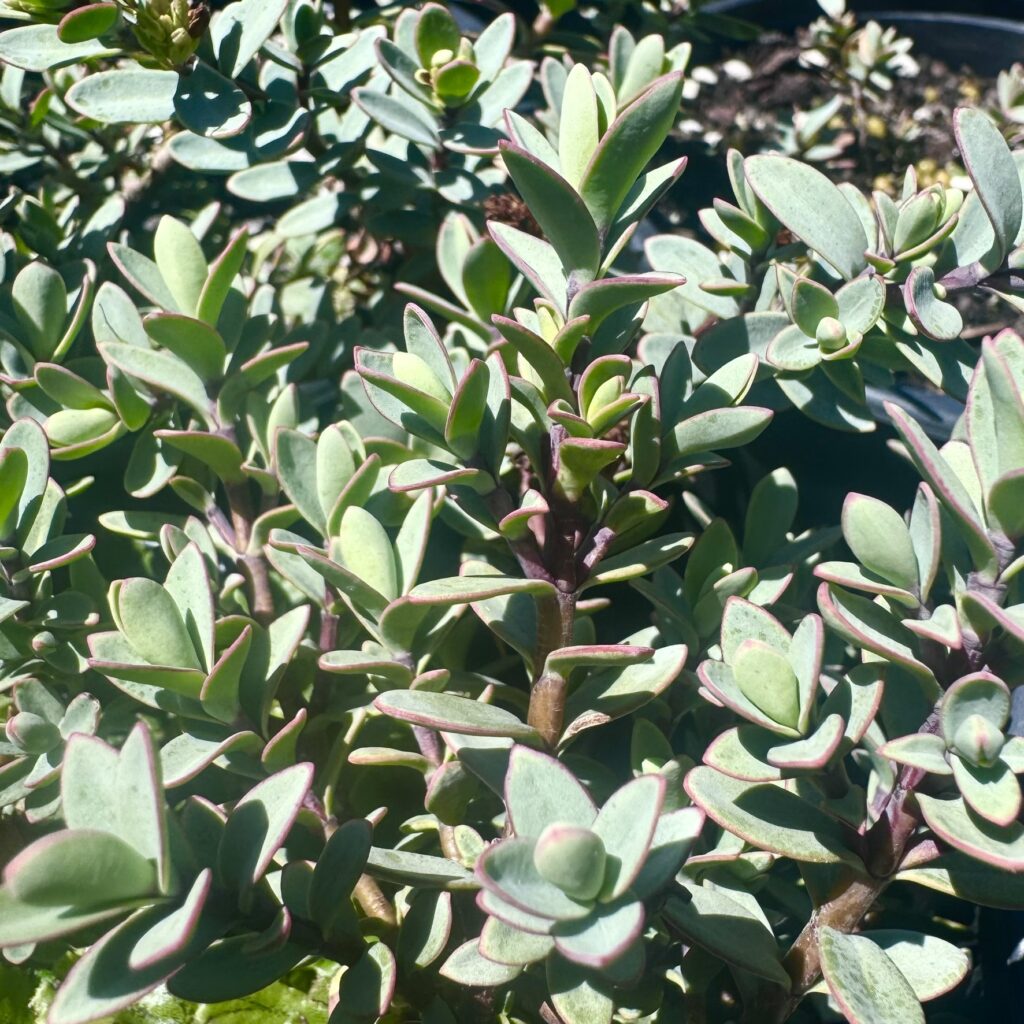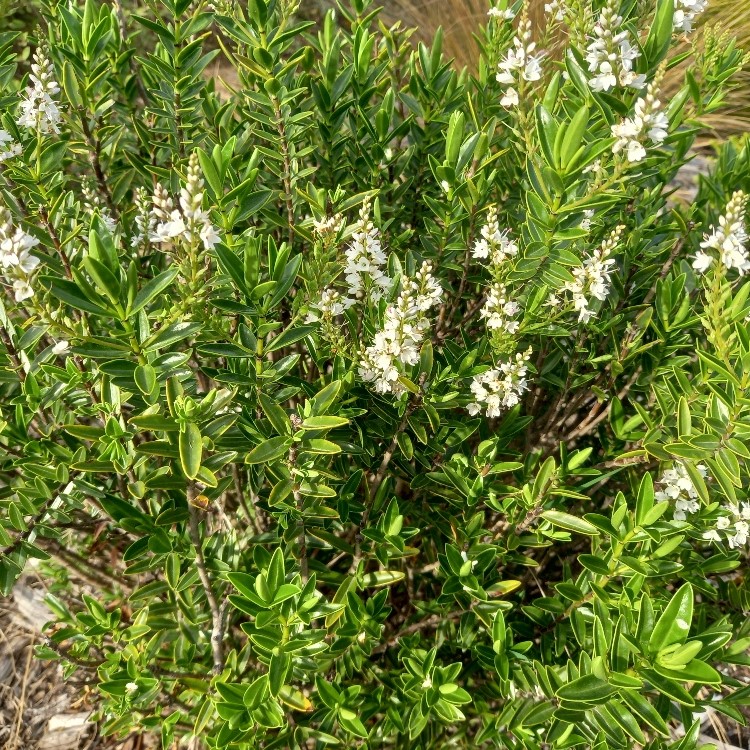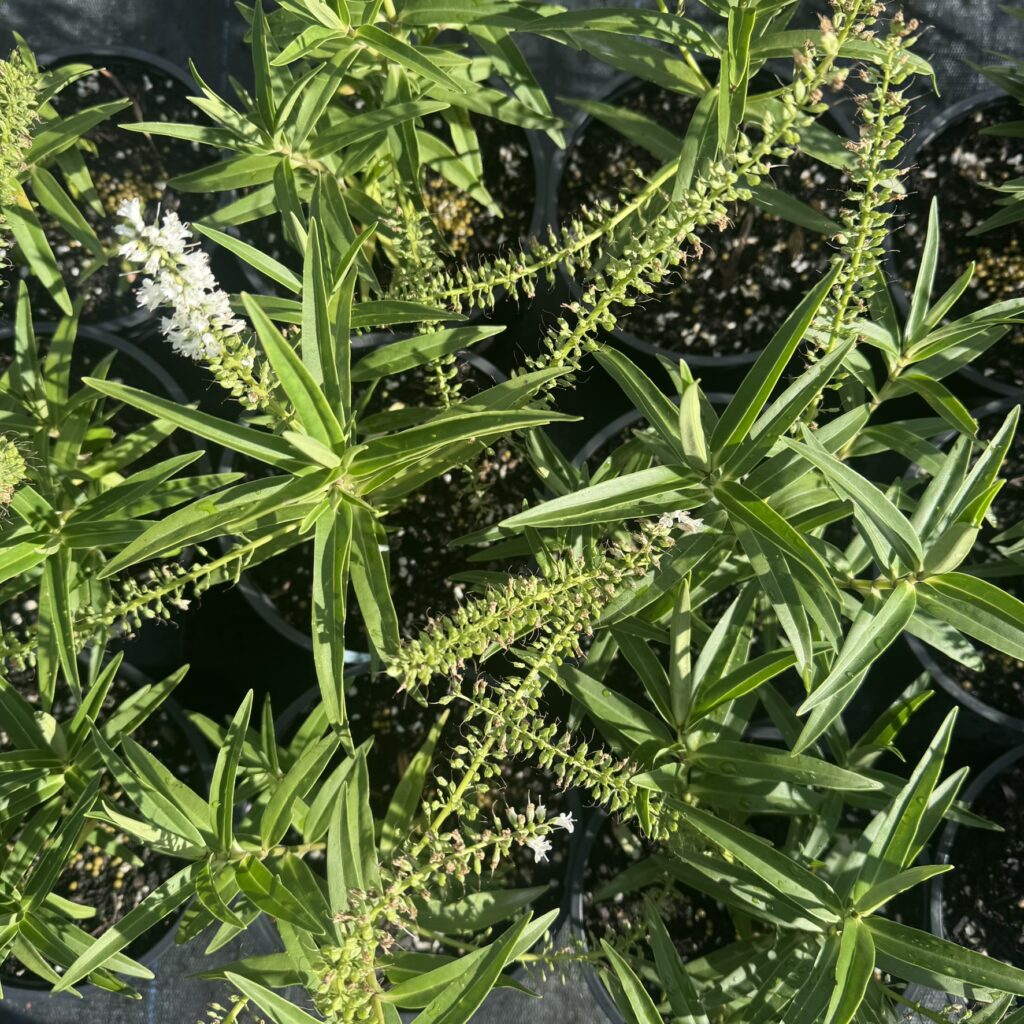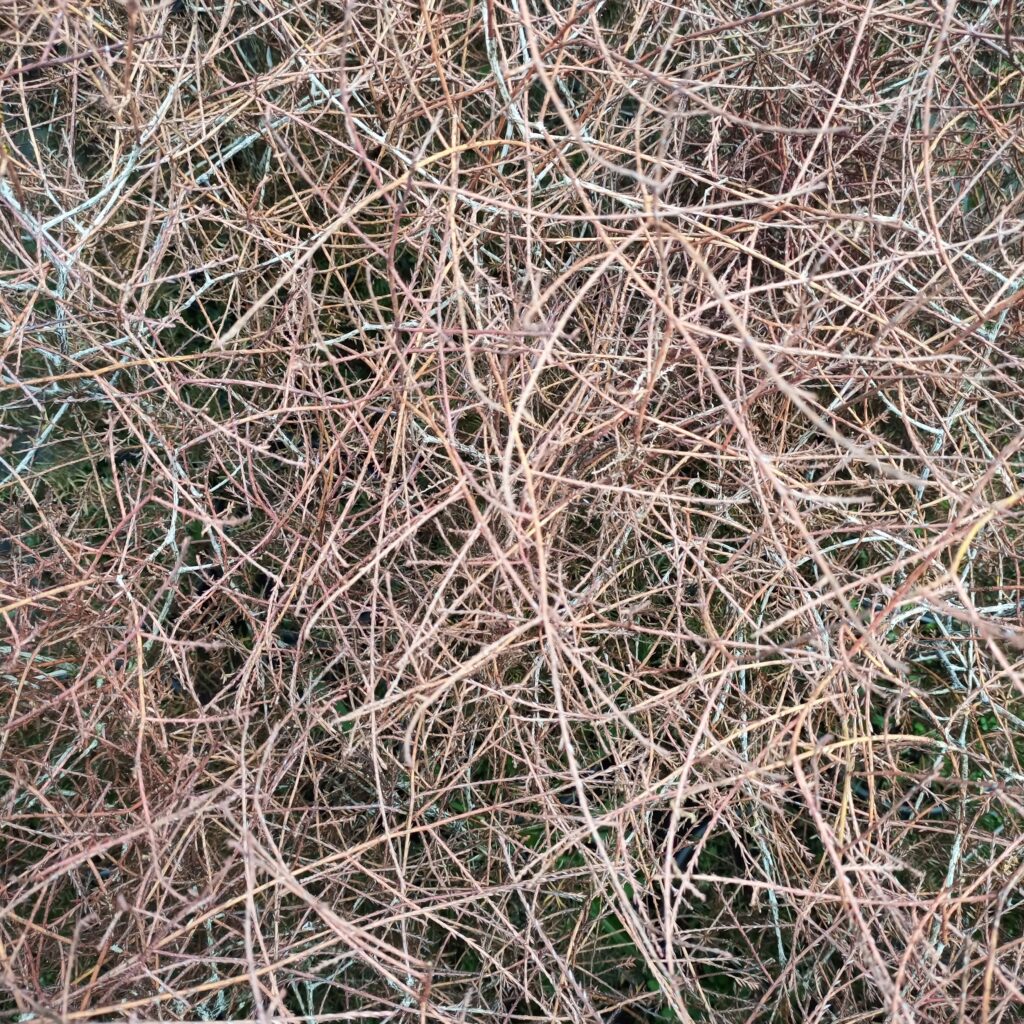Matukituki Nursery Plant Library
Use the filter bar to select plant category, or search for individual plant. You can click on the plant image for a larger view
- All
- Flaxes
- Grasses
- Groundcovers
- Shrubs
- Trees
(+) click on plant image for an enlarged view
Acaena anserinifolia
Bushy spreading ground cover with tight habit. Small soft soft green leaves with tiny spherical creamy white flower heads bearing above foliage from December to January. Excellent for banks, rockeries and walls. Shade tolerant.
Acaena buchananii
Compact spreading ground cover with tight habit. Attractive small soft milky green leaves with small spherical bronze flower heads bearing above foliage from December to January. Excellent for banks, rockeries and walls.
Acaena inermis ‘Purpurea’
Compact spreading ground cover with tight habit. Attractive small soft deep purple leaves and tiny spherical creamy white flower heads bearing above foliage from December to January. Commonly used for landscaping sites. Excellent for banks, rockeries and walls.
Aciphylla aurea
A low growing species with robust, spiky golden slender leaves. From November – December it sends up a large spiky flower head, which can reach up to 1m, with small white flowers amongst the vicious spikes. Found in montane to low-alpine terrain amongst alpine grasses and rocks in dry and very well draining soil.
Acrothamnus colensoi
A low growing spreading alpine shrub with small bronze reddish green leaves. Small white bell shaped flowers accrue from November – February, followed by berries that vary from white to pink and red. It grows on well draining soil amongst tussocks and rocks. Hardy.
Anamanthele lessonia
A graceful grass which forms a tufted clump with narrow bright green to orange foliage. Arching stems of feathery flowering plumes reaching a height of 1.5m. These appear to have a rosy hue which shimmers in the light. A beautiful grass for group planting giving a bold effect or as a ground cover.
Aristotelia fruticosa
Bushy evergreen fast growing shrub. The small leaves with serrated margins are arranged alternately along reddish coloured stems. Juvenile leaves are larger. Small cup shaped pink-purple-white flowers arranged in panicles, followed by purple to white berries, which are supporting bird life. Commonly used in re-vegetation sites used in a variety of site conditions including dryer soils.
Aristotelia fruticosa x serrata
A cross between the true species of Aristotelia fruticosa and Aristotelia serrata growing into a small deciduous tree up to 3 meters. Slender serrated leaves in a variety of colours from green to red. Its cup shaped pink flowers forming in panicles from spring to summer, which transform into purple berries loved by native birds. Handles a variety of soil, prefers moist well draining soil. Hardy.
Aristotelia serrata
Deciduous, vigorous growing tree which can grow to up 10 metres. Large serrated leaves have shades from green to red, becoming more vibrant in colour during autumn. In spring attractive tiny purple pink-red flowers in long panicles are followed my purple berries, which sustain a native bird life. Used often in re-vegetation sites. Prefers sheltered shadier sites.
Astelia chathamica
A flax like species with silvery green soft leaves bearing from its centre. Flower heads appears from October which turn into attractive orange to red berries from February. Endemic from the Chatham Island. A popular plant for landscaping sites in rich free draining sites.
Astelia nervosa
A flax-like plant with long slender leaves emerging from the center. Foliage is slightly hairy with colours ranging from silver-green to bronze with red orange fruit ripening in autumn. Found in mountainous regions with high rainfall.
Austroderia richardii
A large growing hardy tussock-like grass with long slender green-yellow foliage with sharp edged. The attractive flower head forms an arching plume of pale golden yellow up to 60cm tall. Versatile variety used for re-vegetation and landscaping to erosion control and shelter. Handles a variety of soil conditions. Hardy.
Brachyglottis greyi
A spreading shrub with an upright habit and soft grey-green foliage. The velvety properties of the leaves help the plant to survive the harsh conditions of dry summers and cool winters and to thrive in exposed and rocky sites. The bright yellow daisy-like flowers appear en-mass through summer.
Carex buchananii
A dense upright growing sedge. With bronze foliage, which fades out and curl at the tops. Hardy grass, suitable most conditions, prefers moist soils.
Carex buchananii ‘Bannockburn’
A upright growing sedge with fine foliage. Golden green foliage fading out to curled tips. Hardy species tolerant of windy and frosty conditions. Prefers moist with free draining soil. Great species for mass planting.
Carex secta
A large sedge with green weeping foliage turning gold-orange at the tips. Grows best in wet and damp conditions. Suitable for edging of river beds and wetlands. Can handle dry periods. The roots will help stabilize ground structure, can prevent erosion and are used to filter ground water.
Carex testacea
Attractive low growing sedge with a vibrant green-orange foliage. Hardy evergreen, which grows well in dryer and colder sites. Popular for boarders or mass planting.
Carex virgata
A vigorous sedge with bright green leaves in a upright weeping habit. Suitable for swamps, drained margins, seepage and wet pastures. A successful colonising plant, used for wetland planting and re-vegetation sites. Helpful to stabilise ground and filtering ground water.
Carmichaelia compacta
A small shrub with thin erect yellow-green twigs. Mostly leafless but features delicate pink purple white flowers from October to December. Occurs naturally in Cromwell Gorge on rocky dry banks.
Carmichaelia kirkii
A sprawling almost climbing leafless grey brown shrub with intermingled branches. The white pink delicate flowers are attractive to many insects. Prefers moderate to high fertile soil amongst shrubs. At risk of declining in the wild due to habitat loss and human intervention.
Carmichaelia petriei
A yellow-greenish erect shrub with long leafless branches. Small clusters of pink to violet and white flowers can be seen from November – January, followed by a nutty seed. Very suitable for dry conditions and frosty sites. Good species for group planting or re-vegetation sites.
Carmichaelia stevensonii
A small unusual looking tree with weeping leafless branches. It longs slender branches flow with the wind and the delicate violet flowers make it even more striking when blossoming. It is hardy and tolerates dry to rocky well draining soil in full open sunny sites. Creates an attractive feature tree popular for landscaping sites.
Carpodetus serratus
A large canopy tree growing up to 10m. With small ovate or round, mottled leaves with a toothy margin. Juvenile branches have zig-zag growing twigs. The fragrant white flowers grow in 5cm panicles forming into black berries from May to June, which are very attractive to native birds. Prefers a sheltered position out of the wind with moist well draining soil.
Chinochloa rubra
A large tussock known for it long slender rolling foliage in bronze, golden to orange tones. Forms a tufted seed head from February – April, which is very attractive when flowing with the breeze. Hardy, best growing in cooler and damp conditions.
Chionochloa conspicua
An alpine tussock with green-yellow slender foliage. Produces a huge, feathery flower head on tall stalks which emerge from its centre in the summer months. Hardy. Prefers moist soil.
Clematis afoliata
A sprawling yellow green vine, which has very small, opposite clusters of leaves. From October pale green scented flowers appear. It is one of the pioneer species that are good for early ecological restoration and is found to associated with Coprosma species. It naturally occurs in damp, well drains soil, in open grass land or rocky areas.
Clianthus maximus
A small bushy shrub with green leaflets arrange it center. Well knowing for its showy large red flowers which bloom from winter to spring. This is a species originally from the North Island and the seed is not eco-sourced. However, its been collected from plants that are thriving in the Otago climate. It is a nitrogen fixing plant which is important to soil health. An important food source for birds in the winter and spring when not many other plants in this region flower. Recommended to plant in a sheltered site, sunny with semi shade. Will grow in moist well drained soil.
Clianthus puniceus ‘Rosea’
A small bushy shrub with green leaves that has individual oval leaflets arranged along the spine. A cultivar of the main species with showy large pink flowers, which bloom from winter to spring. The species is not Eco-sourced. However, its been collected from plants that are thriving in this Otago climate. It is a nitrogen fixing plant which is important to soil health. It is also a food source for birds during winter and spring. Recommended to plant in a sheltered site, sunny with semi shade. Will grow in moist well drained soil.
Coprosma acerosa ‘Hawera’
Compact, spreading groundcover with tangled branches and lush small foliage that will form a tight mat like look when mess planted. Hardy Coprosma species that will tolerate poor, dry soils from hot to frosty sites.
Coprosma brunnea
A sprawling long branched Coprosma species. Bronze-orange colored with small dark green leaves and pale blue berries which fruit from February to June. Naturally occurring from lowland to sup-alpine, in riverbeds and rocky sites. Hardy species, tolerant of frost and dryer conditions. Great plant to be used as a groundcover and attractive habitat and food source for lizards.
Coprosma crassifolia
A Coprosma species with a upright growing habit with interlaced brown orange branches. Its paired leaves are round with glossy green color on top and whitish below. Fruit is present from November – June and is attractive to native birds and lizards. Tolerant of exposed and frosty sites. Naturally occurring in rocky areas.
Coprosma intertexta
A Coprosma species forming a wide angled shrub with reddish grey slender branches and needle like opposite clusters of leaves. Coprosma intertexta is at risk of declining in the wild. It occurs naturally inland in dryer and exposed areas, amongst rocks or sandy soils. It fruits from July to December and is a good food source for birds in winter and spring.
Coprosma linariifolia
This Coprosma species is a bushy shrub or small tree with a upright habit. The twigs are dark brown and fuzzy to the touch. The pairs of small green leaves are linear. White berries are present in Autumn, which are an attractive food source for native birds. Found from lowland to montane forest and open shrubland.
Coprosma lucida
A tall shrub with pale green stems and large glossy oval pointed leaves. Orange red berries form in clusters and are loved by native birds. Tolerant of most soil conditions but prefers moist soil in part shade position. Can be intolerant of harsh frost when young.
Coprosma propinqua
Hardy evergreen fast growing shrub, with interlaced branches and clusters of paired dark green leaves. Forms tiny yellow flowers in spring, the female plants bear dark blue to white berries in autumn which are loved by native birds. Commonly used for re-vegetation sites, suitable for a variety of site conditions including wet sites like wetland and river banks.
Coprosma rhaminoides
A small shrub with divaricated branches and small green leaves. Female plants are covered small ruby red berries in Autumn. Prefers shade to partly sunny sites. Naturally found as dense under story of lowland forest.
Coprosma rigida
A Coprosma species with orange bronze coloured branches that grow in a upright habit. Green oval shaped leaves form in opposite clusters. Berries vary from white to yellow and are a great food source for native birds. Often used for re-vegetation sites in shadier and damper sites.
Coprosma rotundifolia
Divaricating shrub, closely branched, with green leaves in more shade positions turning purple in sunnier sites. Produces masses of bright red berries in summer with are attractive to native birds. Prefers sheltered semi-shaded position.
Coprosma rugosa
A large shrub with wide angled branches growing in a upright habit and an orange-bronze appearance. Its small slender green and yellow leaves are needle like in opposite clusters. The larger white to pale blue berries are loved by native birds. Great species for re-vegetation site, tolerant to a variety of soils but prefers moist soils. Also popular for landscaping with its color and structure.
Coprosma tayloriae
A shrubby Coprosma species with grey fuzzy stems and small green-yellow leaves. Suitable for re-vegetation sites on open and sunny to part shade positions with well drained soils.
Coprosma virescens
A Coprosma species with inter tangled branches growing into a large shrub. The branches are pale orange-brown with small opposite green leaves. The fruit grows in late Autumn and is an important food source for native birds during a time when not much fruit is around. The plant naturally occurs in Queensberry on rocky and dry hills sites. It is a great plant dryer sites including re-vegetation projects or gardens.
Cordyline australis
Commonly known as the Cabbage tree or Ti Kouka. It is tolerant of most conditions and is widely spread through out all of New Zealand. A tall multi stemed specimen with pointed leaves growing in tufts. The scented white flowers grow on bushy branches from November, turning into white berries from January to April. Ti Kouka is an important specimen for many other species. While bees are attractive to the nectar, native birds love the berries and use the canopy to nest, while other insects also live in the bark and in the dried leaves that stay around the trunk. A pioneer species that often survives wild fires and is a great species for re-vegetation sites including wetlands or forest margins.
Corokia cotoneaster
Large shrub with grey slightly fuzzy divaricating branches. Small slender dark leaves with green-yellow shades. Attractive bright yellow flowers bloom from October – December, which turn into orange or red berries from February through till March. Grows in a variety of location from shady sites by the lake shore to sunny rocky sites. Great species for re-vegetation sites and popular garden plant.
Dacrycarpus dacrydioides
Kahikatea are the largest of the Podocarp forest trees in New Zealand. Adult trees can reach up to 80 meters high during a live span of 600 years. The tree has grey dark brown bark which sheds in thin flakes. The tree branches out only at the top and has small overlapping scale leaves. Male and female trees bear cones, female cones transform to large red fruit with the dark purple seed hanging on the outside of the fruit. Seeds are loved by native birds especially Kererū. The trees are naturally growing in lowland forest that are poorly drained and frequently flooded. In Wānaka only a few trees remain at the edge of the lake below the Minaret Valley.
Discaria toumatou
A woody grey shrub, which will grow slowly into a small tree in a life span of a 100 years. It is New Zealand’s only thorny endemic tree, with large spikes opposite of each other on branches and twigs. Bearing clusters of dark green oval leaves, in amongst white scented flowers appear in spring which are very attractive for bees. Through the nitrogen fixing abilities in the roots (like legumes) it is able to survive very dry soils and is often found in amongst tussock land, dry river beds and rocky hill sights. It is an important pioneering species to make nutrient available to other plants.
Dracophyllum longifolium
A shrub with upright growing habit and erect grey branches. Bearing long narrow pointed orange-green leaves. A slow growing variety found in sup-alpine terrain to sea level through out the South-Island. Hardy.
Fuscospora cliffortioides
Large forest canopy tree, found in montane to low-alpine forest. Bearing small leathery leaves, small red flowers which accrue from November – January and form a small nutty seed from February to April. Popular restoration species as well as for landscaping purposes. Handles poor soils.
Fuscospora fusca
A tall canopy forest tree growing in lowland to montane forest. Can reach a height of 30m over its live span. Distinguishable from other beech trees from its larger sharply toothed leaves, which turn to a red color during winter. Red flowers occur from September to December, followed by nutty seed until March. Suitable in sheltered sites with moist, well-draining soil.
Fushia exorticata
A small fast growing deciduous tree with spreading branches, light brown-orange flaking bark and large pointed leaves, which are dark green on top and white underneath. Beautiful bell-shaped flowers occur in a range of colors from pink to purple and green from August to December and transforming into large purple berries loved by native birds. Trees appear in lowland forest, preferring moist well draining soils. They are best planted in sheltered position as they can be frost tender. Kūtukutuku is considered the worlds largest fuchsia.
Griselinia littoralis
Hardy shrub or small tree. Densely branched with thick leathery oval deep green foliage. Bearing dark purple berries in late Autumn which are an attractive food source for native birds. Suitable for most soil conditions, prefers moist soil in semi sun to part shade. Hardy evergreen commonly used for re-vegetation sites as well as landscaping sites and hedging.
Halocarpus bidwillii
A large multi branched shrub in the conifer family, which can turn into a small tree. Juvenile plants look quite differently with linear spreading leaves, which turn into slender cord like branches, foliage is yellow-green. The dark brown or purple seed sits in a white fleshy cup and fruits from February to June. It is a declining species found in wetland margins and boggy sites in lowland to sup-alpine terrain
Hebe ‘Red Edge’
A small compact shrub bearing larger grey-bluish leaves with a red outer edge. Leaves are more pinkish at the shoot tip and during the colder month of the year. Flowers are pale pink and flower over Summer month.
Hebe decumbens
A low growing erect shrub with pairs of oval dark green leaves, which have a red band on the outer edge. Delicate white flowers are very attractive to bees and insects. The shrub can tolerate dryer conditions, it would be naturally found in open low-shrubland or grasslands.
Hebe evenosa
A small-medium rounded shrub with lime-green glossy leaves. In Spring white flowers are very prolific and attractive to bees. A hardy species, tolerant of a verity of soil conditions.
Hebe hectorii
Low growing spreading shrub with small dark green erect cord like twigs. Naturally found in sup-alpine grassland and shrubland. Prefers dryer conditions, well draining.
Hebe inverey
A spreading hebe with silvery-blue foliage and deep purple flowers. Prefers well-draining soil, ideal for rock gardens and to cover soil below shrubs and trees. Hardy.
A prostrate Hebe with silvery-blue foliage and deep purple flowers. Prefers well-drained soil and full sun. Frost hardy.
Hebe McEwanii
A small-medium shrub with and upright habit. It bears small pointy grey-bluish leaves with purple flowers in Summer. Attractive to bees and butterflies.
Hebe odora
A compact rounded shrub with small oval green leaves with yellow outer edge. Beautiful white flowers bloom over Summer which are attractive to bees. Naturally found in lowland grass- or shrub-land.
Hebe pauciramosa
A neat bush, bearing pairs of small dark green leaves. White flowers occur near the tip of the twig in short spikes. Naturally occuring in wetter sites in between tussock land. Often used for landscaping sites.
Hebe propinqua
A low growing Hebe with spreading habit, bearing scaly twiggy leafless whipcord like branches. Originating from southern Otago mountains in sup-alpine grasslands. Tolerant of dry sunny and frosty sites.
Hebe rakaiensis
Bushy shrub with narrow pointed bright green leaves and white flowers that bear in summer. Naturally found in sup-alpine shrubland often close to streams.
Hebe salicifolia
A large fast growing shrub, with tall slender branches and spear shaped green-yellow leaves. Its has larger white-lilac drooping flowers which are attractive to bees and birds for its nectar. It is a great re-vegetation plant suitable for a verity of planting sites.
Hebe salicifolia ‘snow drift’
A cultivar species of the popular Hebe salicifolia that is more suitable for gardens with its more compact habit and medium maturing height. A bushy shrub with narrow leaves and a white spike like flower appear from December – February. Hardy.
Hebe supalpina
A large upright growing shrub with narrow pointed leaves and prolific white bell shaped flowers during the Summer month. Naturally found in supalpine shrubland with higher rain fall (Matukituki Valley).
Hebe topiara
A compact shrub with pale grey-green oval leaves. Bearing white flowers loved by bees in Summer. Popular hardy landscaping shrub. Prefers well draining soil.
Helichrysum lanceolatum
A much branched shrub with woody twigs and round green leaves. Beautiful white flowers blooming in Summer, followed by fluffy seed, which will disperse with the wind. Commonly found in dry forest edges.
Hoheria angustifolia
An attractive tree with soft grey bark and slender toothed leaves (adult form) that bear on mess in weeping branches. Clusters of starry white flowers occur in mid Summer which are very attractive to bees. Juvenile form of the tree is columnar with small leaves, which will transform into a canopy tree that is common to reach 6m but can get taller over its whole life span. Hardy species tolerant of exposed sites as well as poor soils.
Hoheria glabrata
One of a few deciduous New Zealand native trees. With green heart shaped serrated leaves and clusters of large white bell shaped flowers and pink stamens. Leaves are glabrous compared to Hoheria lyallii in which leaves are velvety hairy. Juvenile plants start of with multi lobed small leaves. Found in wetter areas of lowland mountain ranges and sub-alpine terrain.
Hoheria sexstylosa
A fast growing tree, columnar in juvenile form with small leaves turning into narrow leather toothed leaves on tangled weeping branches. With clusters of starry flowers which bloom from late Summer to Autumn, which provide nectar for native bird during a spares time for food. Not endemic to the Otago region but a hardy verity that can stand this climate. Often chosen for its attractive flowers.
Juncus edgariae
A grass like swamp plant forming upright dense dark green tufts with clusters of brown flowers at the tip of the stems. Found widely around New Zealand in wetland and river beds, seasonally damp sites and open shrubland. Great plant for re-vegetation sites.
Kunzea serotina
A large shrub turning into a tree over its life span. With a narrow trunk and loose papery bark. Small narrow dark green leaves with a instinct tea-tree scent. Small delicate white flowers occur from November and can cover the whole tree giving a hill sites a look of being covered in snow. Flowers are very attractive to bees and insect. Important pioneer species that is used for re-vegetation able to grow in dryer sites providing shelter and building up plant matter for other species.
Leonhebe cupressoides
A compact upright growing shrub with thin scale like grey-green leafless twigs. Clusters of white-pink flowers occur from November. A rare plant in the wild now that has decline because of human caused interruptions. Occurs in rocky terrain of open shrubland.
Leptecophylla juniperina
Bushy shrub with needle like prickly bright green leaves. Flowers are bearing through out the year turning into berries varying from white to pink. Berries are an important food source for for native birds and lizards. Plants are a pioneering species often associated with margins of beech forest and found in well-draining sites with semi shade.
Leptospermum scoparium
A bushy shrub, which can turn into a small tree up to 10m over it life span. With brown-grey flaky bark and dark green sharp pointy leaves. Attractive white flower with pink stamens occur through out the year which are loved by bees. Flowers turning into woody pods containing tiny flakes of seed. Found throughout New Zealand from coastal to wetter mountain ranges.
Libertia cranwelliae
A small plant with narrow long pointed green-yellow-orange leaves fanning out from its base spreading through rhizomes. Delicate white flowers occur in spring on short spike transforming into seedpods. North island variety popular for landscaping sites. Hardy.
Libertia ixiodes
A small spreading plant with erect habit, narrow long pointed leaves fanning out from its base, in green-yellow shades. Delicate white flowers with 3 pedals in a triangular shape occur in clusters from September, transforming into green seedpods. Naturally found in North Island and north of the South Island, hardy variety suitable for Otago climate often used for landscaping sites.
Lophomyrtus obcordata
A large shrub turning into a small tree of 6 metres over its life span. Juvenile plants have green leaves with rounded tips and red veins adding an interesting feature. Adult plants have grey-brown flaky bark and foliage changes to soft green heart shaped leaves. Beautiful white flowers with many long stamens reaching from its center appear from November and turn to fleshy red berries in January. Occurs natural around Wānaka close to the lake shore where its more sheltered and frost is not as severe. Also a popular plant for landscaping and hedging.
Lophozonia menziesii
Large canopy tree, slow growing up to 30m over its total life span of hundreds of years. Distinguishable from other beech trees by the silver bark and mid-size leathery leaves with uneven blunt teethed edges. Prefers cooler climates with higher rainfall or consistently moist soil.
Melicope simplex
Large much branched shrub, with purple grey bark and upright growing habit. Bearing green rounded leaves, rough-edged and when crushed have an aromatic citrus smell. Small green-white flowers form in Spring loved by many insects followed by black berries. Found through out New Zealand in lowland forest as well as on the coast. Tolerant of exposed sites and a variety of soils including dry, sandy, loamy and clay soil.
Melicytus alpinus
A small dense growing shrub with ridged and pointy upright growing branches. Small dark green almost black foliage grows amongst the inner center of the bush, leaving the tips of the twigs bear. Its structural tight protective habit and the white berries that occur from early Summer creates an ideal habitat for lizards. Found in open grassland and rocky sites. Tolerant of dry and exposed conditions.
Melicytus lanceolatus
A shrubby tree growing in a open habit, bearing yellow-green toothed narrow leaves. Clusters of small white flowers appear through Summer, followed by purple berries that are an important food source for native birds. Occurs in colder and wetter areas of New Zealand.
Metrosideros umbellata
A tall slow growing forest tree bearing opposite leathery leaves. Known for their beautiful red bristly flowers that bloom over Summer. Whole hill sites can be covered in a red glimmer during those month. Prefers moist soils in sheltered semi shade.
Muehlenbeckia astonii
A divaricating shrub with brown-red zig-zagy branches bearing small green heart shaped leaves in Summer. Tiny delicate flowers bloom from August to January and turn into tiny fleshy white-clear berries. Creates ideal habitat for lizards with its tight habit and berries as a food source. Also a popular landscaping plant due to its structural attributes. Tolerant of exposed and dry conditions.
Muehlenbeckia axillaris
A spreading groundcover with dark woody branches and small green-reddish leaves. Bearing tiny white starry flowers that turn into white glossy berries. Widely spread and common plant amongst grassland and rocky sites also popular as a ground cover for landscaping sites.
Muehlenbeckia complexa
A fast growing twining vine with slender creeping branches and small round green leaves. Bearing tiny starry flowers in early Summer which will turn in to glossy white berries. Found more coastal covering banks and in inland in lowland and montane regions growing on other shrubs and trees.
Myrsine australis
A large bushy shrub with distinctive red branches and wavy mottled yellow-green leaves. Bears clusters of creamy white flowers from August to January, followed by back-purple berries which ripen in Autumn to an attractive food source for native birds. Frost tender when young, prefers a sheltered semi shaded position with moist well draining soil.
Myrsine divaricata
A much branch large shrub turning into a small tree with a weeping habit. Twigs are pale brown to orange, bearing small green rounded leaves with red edge. Tiny yellow flowers turning to purple-white berries. Tolerant of exposed sites with frost and dry conditions.
Neomyrthus penduculata
A large shrub or small tree with thin grey-brown wide angled branches, bearing small green mottled oval leaves. Soft white flowers with many stamens projecting from its center, which turn to fleshy orange berries. Commonly found in the under story of lowland forest often associated with Podocarp forest.
Olearia arborescens
A large shrub turning into a small bushy tree. Bearing attractive large glossy leaves, oval pointed with uneven toothed edge. Large daisy like flowers occur in clusters from October and turn into fluffy seed. Prefers sheltered position in semi shade with free draining soils.
Olearia avicenniifolia
A large shrub or small bushy tree. Bearing large leathery oval pointed leaves, pale green on top whitish underneath. Clusters of white daisy like flowers blooming in late summer. An attractive nectar source for bees, insects and birds. Found from lowland to montane from shadier to full sun positions. Tolerant of exposed sites.
Olearia bullata
A bushy much branched grey shrub with tiny narrow rolled leaves. Small daisy like flowers appear in clusters and turn into fluffy seed. Provides a habitat for many insect species. Naturally found in wetter upland shrub-land or around wetlands.
Olearia cymbifolia
A small shrub with small yellow-green narrow leaves with downward rolled in edges covering the twigs of the shrub. Small daisy like flowers can cover the whole bush through Summer. Found in sup-alpine grassland. Frost hardy and tolerant of exposed sites.
Olearia dartonii
A large fast growing shrub with slender branches that are fuzzy on the new growing tips and turn into woody stems. Bearing long needle like leaves which give the plant a similar look to Salvia rosmarius (Rosemary). A cultivar species that is often used for hedges or shelter belts. Tolerant of exposed positions, can handle a variety of soils. Hardy.
Olearia fimbriata
A large shrub that turns into a small shrubby tree over its life span. Branches are brown-grey, bearing small green oval tear-drop shaped leaves, arranged in opposite pairs. Small creamy white flowers appear in clusters from January, turning into fluffy seed. One of the declining Olearia species that is at risk due to the habitat loss. Remaining plants are found on dryer hill sites, rock outcrops and river gorges of low-land to montane shrub-land in Canterbury, Otago and Southland.
Olearia fragrantissima
A large shrub or bushy deciduous tree with a upright habit. Zig-zagy grey-brown branches bearing alternating pale green oval pointed leaves. Small creamy yellow sweet scented flowers appear in clusters from October, turning into fluffy seed. One of 8 Olearia species that are at risk of declining due to its habitat loss, animal browsing and weed invasions. It is remaining on lowland forest, rocky and dry terrain and riparian sites on the lower half of the South Island. It generally prefers fertile and warmer sites.
Olearia hectorii
A large shrub growing to a bushy tree over its live span of 150 years. One of a few deciduous native New Zealand plants with oval pale green leaves arranged in opposite clusters along bronze-reddish stems. The buds in springs look very attractive before the foliage emerge for the season. Pale yellow flowers also appear in clusters from October to December, transforming into fluffy seed. Naturally found in wetter conditions of mountain ranges with higher rain fall, as well as on margins of riparian and wetland sites. The plant provides a habitat for insects and supports many moth species.
Olearia lineata
A large greyish shrub that can grow into a tree over its life span. With wiry often drooping branches that bears narrow slender grey-green leaves in opposite clusters. Daisy like flowers appear from November – December turning into fluffy seed. While it is naturally found in tussock grassland and forest margins of lowland to montane terrain, due to its habitat loss, it is at risk of declining. Great species for re-vegetation sites and margins of wetlands.
Olearia nummularifolia
A compact bushy shrub with stiff yellow stems and leathery shiny oval leaves that are slightly curled down, green on top and white underneath (leaves are slightly larger and edges are not curled down as much as Olearia cymbifolia). Clusters of cream white flowers occur in summer and can cover the whole plant, turning into fluffy seed. Found on montane to lower sup-alpine terrain. Handles exposure and dryer conditions.
Olearia odorata
A large bushy shrub with upright habit. Bearing brown-reddish twigs with small oval shaped pale green leaves. Clusters of white flowers appear in spring, turning into fluffy seed. The plant is an important habitat for many insects and moth species. Tolerant of exposed positions dry to loamy soils.
Ozothamnus leptophyllus
A dense growing shrub with sturdy yellow-brown twigs, bearing small green-yellow leaves. In Summer clusters of daisy-like flowers appear on the tip of the twig, turning into fluffy seed. Hardy species, tolerant of exposed and dry sites.
Ozothamnus vauvilliersii
A dense growing shrub with yellow-brown twigs bearing small leathery green-golden leaves (slightly larger and rounder then Ozothamnus leptophyllus). Clusters of white daisy-like flowers appear on the tip of the twig from December to May, turning into fluffy seed in Autumn. Found in montane to lower sup-alpine shrubland and grassland. Tolerant of exposed and dry conditions.
Pachystegia insignis
A small spreading shrub with large dark green oval leathery leaves and furry white stems. Attractive white large daisy flower bloom in spring turning into fluffy seed. Coastal plant, not endemic to Otago region, popular for sunny landscaping sites in between rocks, with dry well draining soils. Hardy.
Parsonsia heterophylla
A climbing plant with twining stems that are often wrapped around the host plant. Foliage changes through out the stages of life; with juvenile plants that can range from small and round, long and narrow and irregularly shaped; adult foliage is dark green and shiny on top, pale underneath, oval shaped and pointy at the tip arranged opposite along the twines. Clusters of beautiful creamy white flowers that are strongly scented appear from September followed by large narrow seed pods that hang down in clusters and open up with turfs of silky hears. Naturally found in lowland forest.
Pennantia corymbosa
A dense growing shrub or tree. Juvenile branches are divaricating with small duck-foot-like leaves turning into larger glossy leaves in adult form. Attractive white fragrant flowers bloom through Summer, turning into black berries that are very attractive to native birds live. Prefers sheltered and shady position.
Phormium cookianum
The smaller flex variety, with a drooping habit. Foliage is tough, shiny bright green. Large organg-red flowers form on large stems that emerge from the center of the plant. Flowers are followed by large seed heads that are hanging down, contain masses of black silky seeds that disburse by popping. Attractive nectar source for native birds. Naturally found in lowland to lower sub-alpine terrain. Great plant for erosion control.
Phormium cookianum ‘Purpurea’
A natural occurring variety of Phormium cookianum with a drooping habit. Foliage is tough, shiny dark green to purple. Large red-orange flowers form on large stems that emerge from the center of the plant. Flowers are followed by large seed heads that are hanging down, contain masses of black silky seeds that disburse by popping. Attractive nectar source for native birds. Great plant for erosion control.
Phormium tenax
The larger flax variety with an upright growing habit, long tough dark green pointed leaves fan out from its base. Tall woody stalks emerge from its centre bearing large red flowers, which are an attractive nectar source for birds. Flowers transform into large upright seed pods with masses of black silky seeds which disburse by popping. Commonly found around New Zealand in wetter sites of wetlands, rivers and lake margins. Great plant to stabilize banks and for riparian planting sites.
Phyllocladus alpinus
A large shrub or small bushy tree in the Podocarp family. Its an attractive looking species with its unusual looking green-grey foliage. The coriaceous leave-like branches are much lobed and fan out unevenly. A dioecious species with male and female cones bearing on different trees. Naturally found in low alpine and shrubland forest to subalpine terrains. It is hardy, tolerant of exposed and frosty sites and can handle poor soils.
Pimelea postrata
A spreading ground cover with soft intermingled branches bearing small pointed grey-bluish leaves. From October white delicate flowers can cover the whole plant, followed by white-pink berries. Popular landscaping plant that can handle a variety of soils.
Pittosporum divaricatum
A dense growing shrub with many woody inter tangled branches bearing small leathery leaves. While juvenile leaves are narrowly lanceolate. Adult leaves become lobed or toothed. Small dark red-pink flowers appear in spring followed by a seed pods containing multiple seeds. Can handle full sun to part shade in variety of soils including dry conditions.
Pittosporum eugenioides
A fast growing large shrub or bushy tree bearing long oval shaped glossy light green leaves, mottled and wavy-edged. Leaves also have a strong lemony scent when crushed. Yellow clusters of scented flowers appear from October and turn into green seed pods that will dry out through the season, attractive to native bird live. Naturally found in forest clearings or margins or regenerating forest. Hardy specimen that can handle exposed sites including windy sites. Needs well draining soil. Young plants can be frost tender.
Pittosporum tenuifolium
A fast growing large shrub or small tree if given the space. With dark branches bearing bright green glossy oval shaped leaves. Bearing dark red-purple bell-shaped flowers from October. Followed by large seed pods with sticky seed. An important pioneering species that is key to forest regeneration as well as riparian planting or wetlands. A popular landscaping plant for hedging or to create shelter. Grows in a variety of soils, hardy and tolerant of exposed positions.
Plagianthus regius
A fast growing tree that has a columnar shape for the first juvenile years, than turning to a canopy tree. Soft leaves with jagged edges pointy to the tip, juvenile leaves are smaller and rounder. Clusters of tiny yellow flowers bloom from September then turning into a green nutty seed. Hardy tree growing in a variety of soils from coastal to low montane area. Great re-vegetation species also suitable for margins of wetlands.
Poa cita
A dense fast growing tussock with golden-green foliage and tufted flower heads growing through early Summer month. Naturally found in dry woodlands and grasslands of dryer or rockier flats or hill slopes. Popular species for mass planting. Tolerant of exposed positions and poor soils. Hardy.
Poa colensoi
A smaller dense growing tussock with fine silver-blue foliage. Tufted flower heads emerge out of the center of the grass, looking attractive waving in the breeze. Naturally found in higher altitude on dryer and rockier hill slopes. Tolerant of exposed positions. Hardy.
Podocarpus laetus
A large slow growing forest tree in the Podocarp family. With papery flaky brown-reddish bark, new shoots are robust and green, bearing green lanceolate, slightly spiky foliage. Dioecious species, forming female and male cones on different plants. Female plants forming red fruit with a black seed attached on the tip of the berry, bearing fruit through out the whole year but most frequently from April – May. Found in lowland to lower sub-alpine forest of impoverished or immature soils. Slight drought tolerant. Young plants can be frost tender.
Podocarpus nivalis
A densely slow growing prostrate or spreading shrub with numerous robust spreading stems. Bearing tough golden-green linear foliage that is spirally arranged on twigs. Specimen are dioecious with female and male cones on different plants. Female plants bearing fruit through out the year. Naturally found in montane and alpine areas on rocky hill slopes or dry grasslands, sometime extending to margins of beech forests. Tolerant of exposed conditions. Hardy.
Prumnopitys ferruginea
A stout slow growing tree in the Podocarp family, that grows up to 25 meters over its live span of 500+ years. With thick flaky reddish-brown bark and a trunk that can have a diameter of 1.5 meters. Foliage is spreading with soft linear dark green leaves. Female cones transform into a fleshy red berry over 12 month containing a large nutty seed. Kererū (wood pigeon) are vital for the survival for this tree species, as they are one of the only reminding large native birds that are able to digest and disburse the seed. Prefers cooler climates, found in lowland forest.
Prumnopitys taxifolia
A large slow growing canopy tree in the Podocarp family growing up to 30m over its life span of 500+ years. With dark brown bark, falling of in thick uneven circular flakes, leaving a interesting looking pattern on the trunk that can reach up to 2m diameter. Juvenile form is spindly with slender brown-grey inter tangled branches bearing fine coppery-brown leaves. Adult foliage is feathery spreading with linear dark green leaves. Dioecious species with female and male cones on different plants. Female cones turn into a a dark purple hard fleshy seed. Kererū are extremely important for the survival of this species as they are one of the only large native birds remaining that can digest and disperse the seed. Often found in drier climates. Found naturally in lowland forest with water logged/ flooded soils in Winter and dryer soils over Summer.
Pseudopanax arboreus
A bushy tree bearing 5 large glossy green oval pointed leaves with toothed edges, arranged in fans on a long petiole. Dioecious with female and male flowers forming on different trees. Flowers are very attractive for bees from June to August. Big clusters of purple fruit transforms on female plants in Autumn which are loved by native birds. Naturally found in secondary forest, in coastal regions as well as on river margins though out New Zealand. Prefers shelter conditions.
Fruit purple, in obvious clusters.
Pseudopanax col.var ternatus
A much branched tree bearing 3 large green leathery pointed leaves with slightly arranged edges, arranged fan-wise on a long petiole. Dioecious species with female and male flowers on different plants blooming from October. With female flowers transforming into black berries, which are loved by native birds. Found in cool and moist forest or shrublands.
Pseudopanax crassifolius
An iconic New Zealand native tree, due to its juvenile habit. Growing a spindly trunk with a few leaves bearing from the top of the trunk. Foliage is tough long lanceolate toothed, dark green-brown colored with a yellow lined midrib. Transforming into a large tree with a beautiful grey-brown veined trunk. Foliage becomes shorter, still narrow with softer edges, dark green, with clusters of leaves on one pedicle. Clusters of flowers appear from January, followed by black and yellow berries. Important food source for bees and native birds.
Pseudopanax ferox
Well known for its juvenile habit, growing a tall spindly trunk bearing downward pointing leaves only at the top. With dark green to brown, very tough and ridged, long-lanceolate, with saw-like edges. Turning to mature form after 10-15 years. Turning to a tall sender tree with beautiful grey spined trunk and bushy canopy. Bearing clusters of dark green linear leaves, still leathery but not as tough. Found from coastal to montane. Tolerant of exposed positions. Can be frost tender when young. Not as common or known as Pseudopanax crassifolius.
Pseudowintera colorata
A large shrub or bushy tree with upright growing habit, very slow growing. With distinctive leathery oval-pointed green-red mottled foliage. Flowers appear directly on older woody stems from December, followed by black fleshy berries. Prefers sheltered position with fertile soil.
Raoulia hookeri
A slow growing spreading attractive ground cover with silver-grey hairy leaflets in a flower like arrangement forming a dense mat. Flowering from December bearing tiny yellow flowers turning to fluff. Naturally found in alpine terrain on dry and rocky soil.
Scleranthus biflorus
A spreading ground cover forming a dense mat. With tiny needle like emerald green foliage. Prefers moist well draining soil in a sunny position. Hardy.
Sophora ‘Dragons Gold’
A cultivar of Sophora molloyi growing into a dense shrub with attractive bushy dull green foliage. Clusters of large yellow flowers bloom from late Winter. A food source loved by native birds. Popular hedging plant for landscaping sites. Can handle poor soils, prefers well draining soils. Hardy.
Sophora microphylla
An attractive bushy tree with drooping habit when in adult form. Bearing long narrow leaves which have multiple small leaflets arranged along the middle spine. Clusters of yellow bell shaped flowers appear from late winter or spring (depending on local variations). Flowers are followed by large woody seed pods hanging down in clusters containing multiple hard yellow seeds. Juvenile form of the tree has tangled and divaricating branches with smaller leaves. Nectar of flowers and leaves are loved by native birds and are an important food source. Kōwhai belongs in the Fabaceae family and is able to fix nitrogen in the soil. Important pioneering species to help other plants establish in challenging condition. Able cope with poor and rocky soils. Popular for both re-vegetation and landscaping sites.
Sophora prostrata
A smaller bushier kōwhai variety with dens tangled divaricated branches, bearing narrow leaves which have tiny leaflets arranged along the spine. Small bell shaped orange-yellow flowers bloom in late spring, followed by woody seed pods containing dark brown hard seeds. Hardy, able to cope with dry and exposed sites.
Sophora teraptera
The larger kōhwai variety with bushy canopy and drooping habit in adult form. Leaves are distinctively larger compared to then Sophora microphylla. Leaves are long and narrow with round leaflets arranged along the spine. Large yellow bell shaped flowers occur in clusters from Spring. Juvenile and adult form is similar with bearing flowers often earlier then Sophora microphylla. Nectar and leaves are a good food source for native birds. Belongs in the Fabaceae family and is able to fix nitrogen in the soil. North Island variety that is often chosen for the specific characters.
Teucridium parvifolium
A compact much branched shrub with upright habit. Branches are golden-yellow-green bearing small round leaves and small white flowers with 5 irregular shaped pedals. Followed by dry seed pods containing 4 black seeds. A declining species found in dry open lowland forest. Hardy. Tolerates poor soils.







